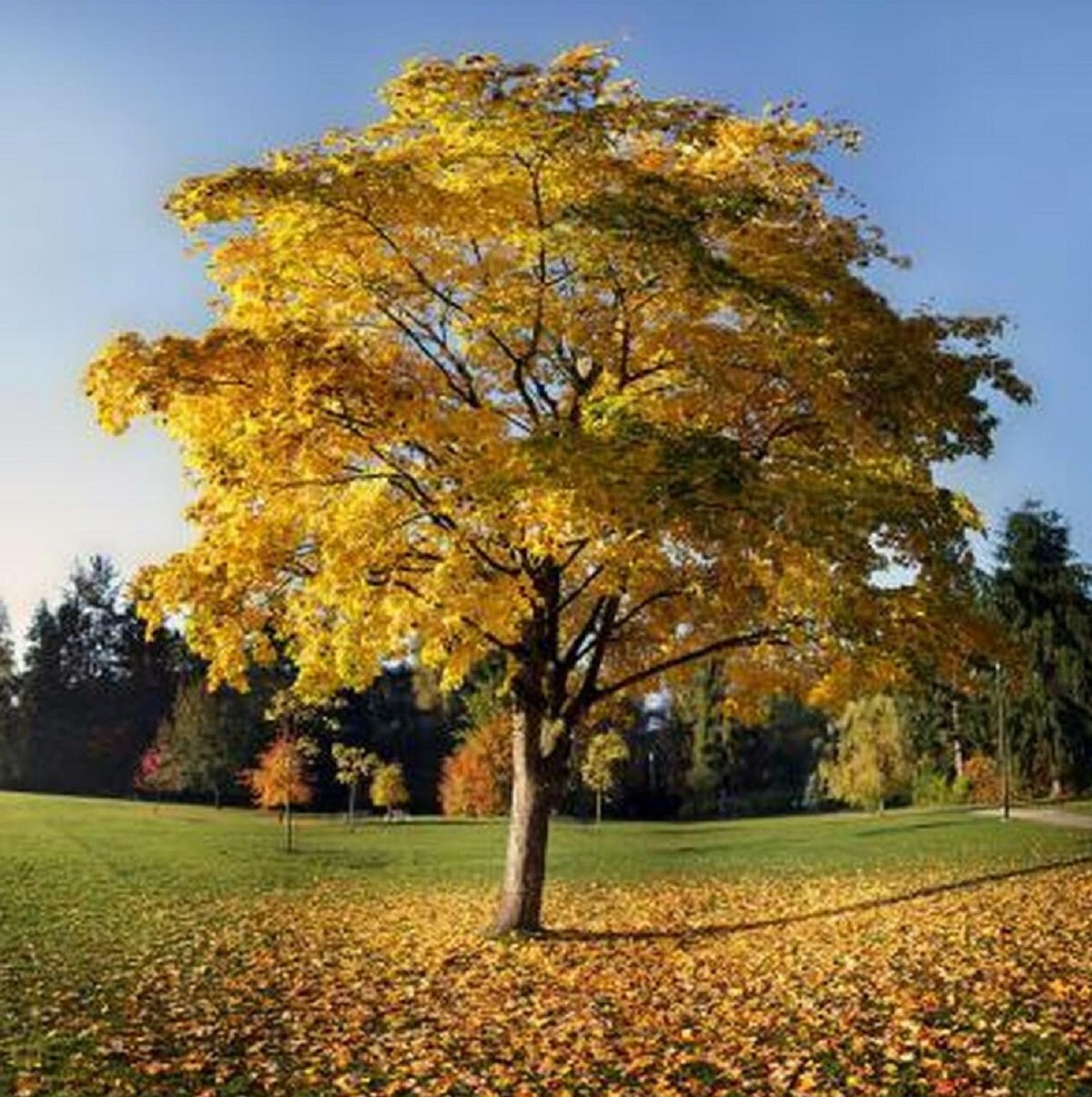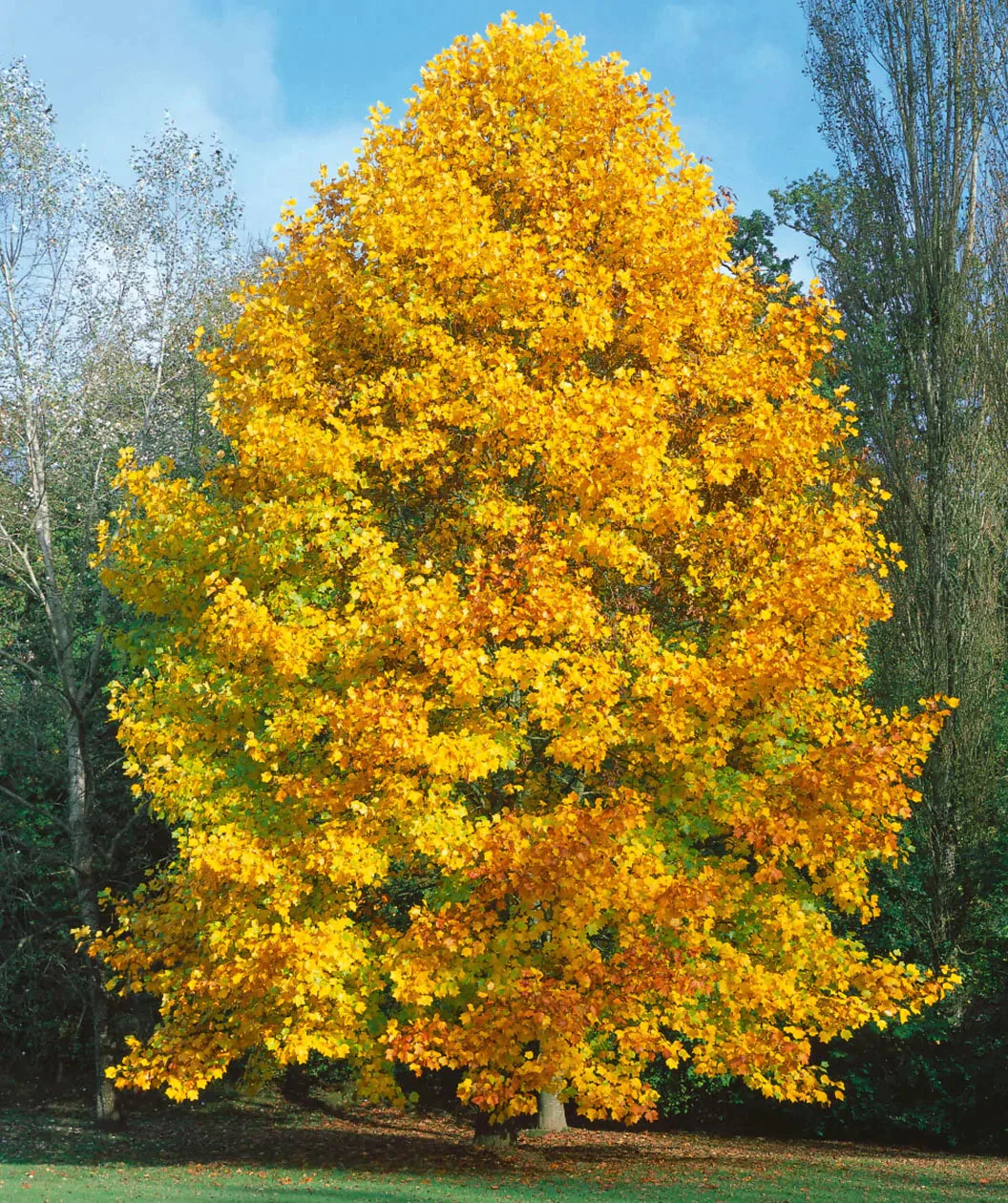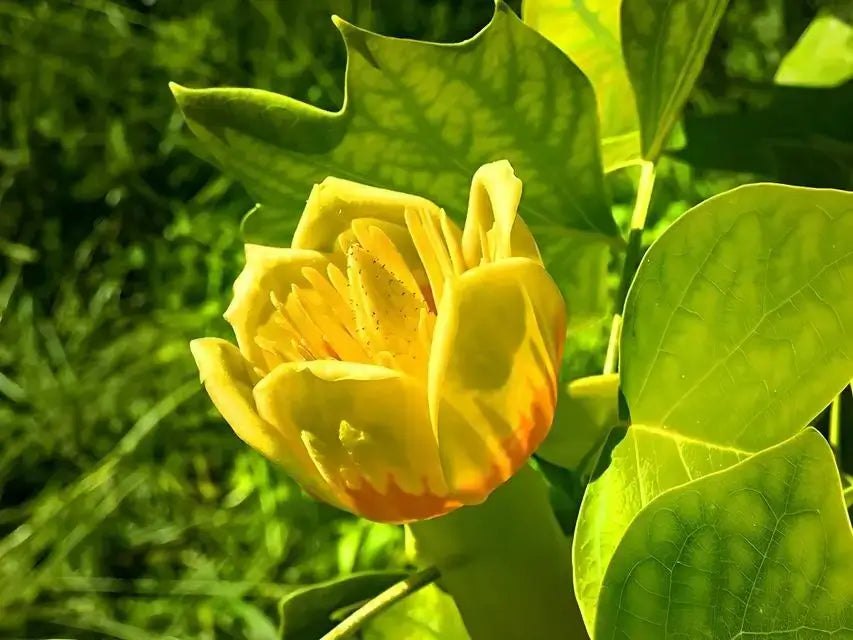Tulip Trees For Sale
The Tulip tree is a tall tree with unique flowers. It will add shade and great value to your yard. It's a fast-growing tree with beautiful golden foliage in the Autumn season. Growing straight and tall makes it a highly desirable tree for homeowners. It has tulip-shaped yellow blossoms in late summer to early fall. This is an invasive species and is hardy and disease and pest-resistant.
Plant Details
Family: Magnoliaceae
Light Requirement: Full Sun
Water Needs: Moist
Height: 60 – 90 ft.
Spread: 30 – 50 ft.
Growth Rate: Fast
Bloom Time: Spring
Flower Color: Yellow
Wildlife Value: Attracts bees
Tulip tree Landscape Uses and Maintenance
The Tulip tree is a giant among trees. It has large leaves and beautiful, multicolored tulip-shaped flowers that are typically not seen until they drop to the forest floor. It will be well-loved in your yard for generations to come.
Its showy, yellow-green flowers, which are orange on the inside, bloom in spring. The flowers are attractive to bees and hummingbirds and are replaced with winged seeds. This is a low-maintenance, self-sustaining tree that will need little care beyond initial planting. The native favorite adapts to well-drained soil.
Avoid planting in compacted areas. Water thoroughly until it is well established, especially during dry periods. This tree should be planted away from houses and given plenty of space to mature. It is ideal for creating shade in your yard. No fertilization is needed..
Noteworthy Characteristics of the Tulip Tree
The tulip tree is a member of the magnolia family, despite having poplar in its name. It is the state tree for several states, including Tennessee!
Exposure
The Tulip Poplar Tree thrives in complete sun to partial shade. It favors at least six hours of direct sunlight daily for optimal growth. While it can tolerate shade, complete sun encourages the best development and vibrant foliage.
Height at Maturity
Over 25 Feet
Usage
Shade
Shipped As
Bare-root
Ships
UPS
Planting Zones
4-9





